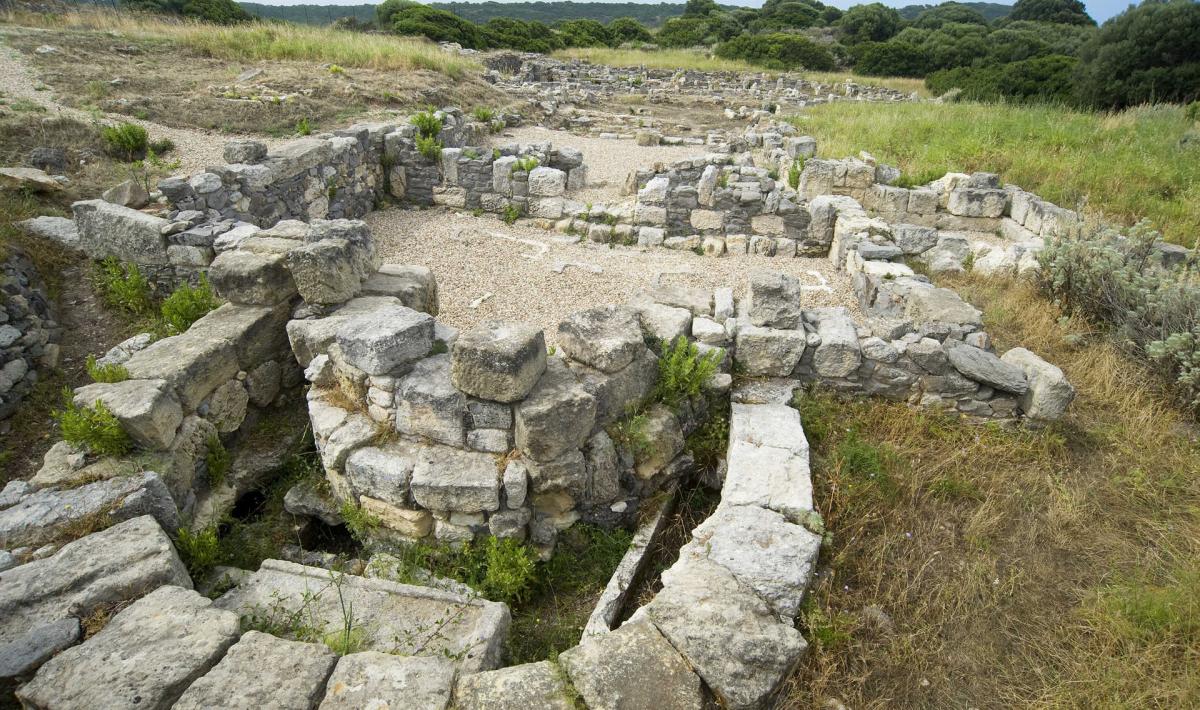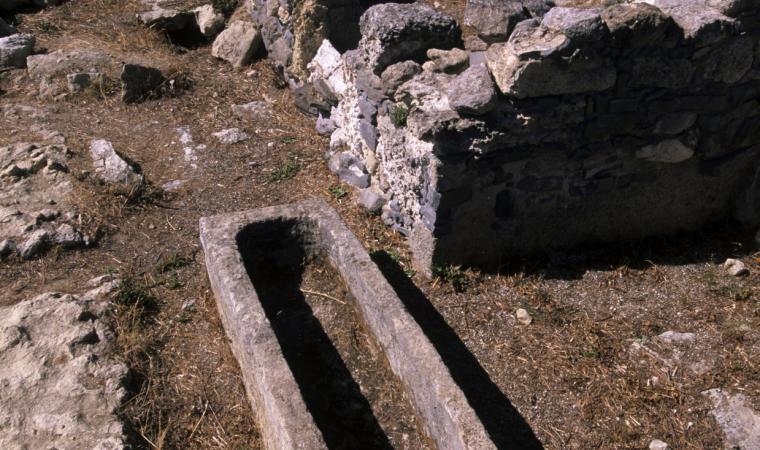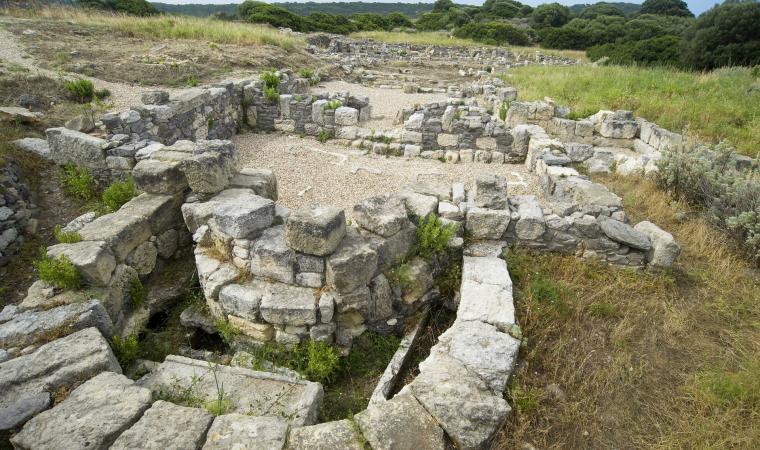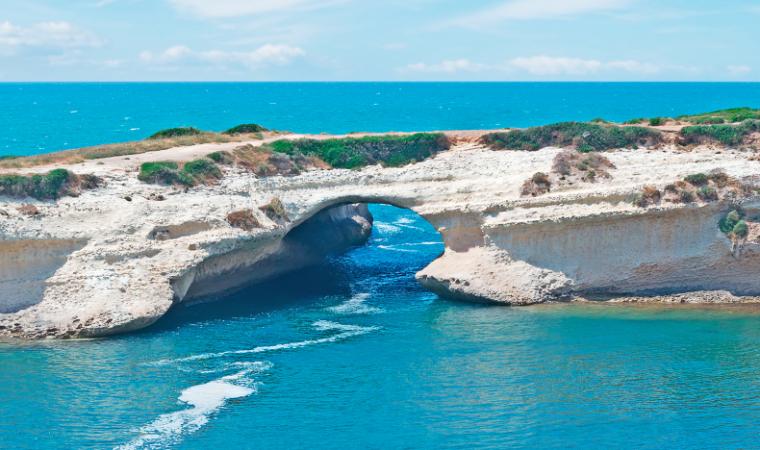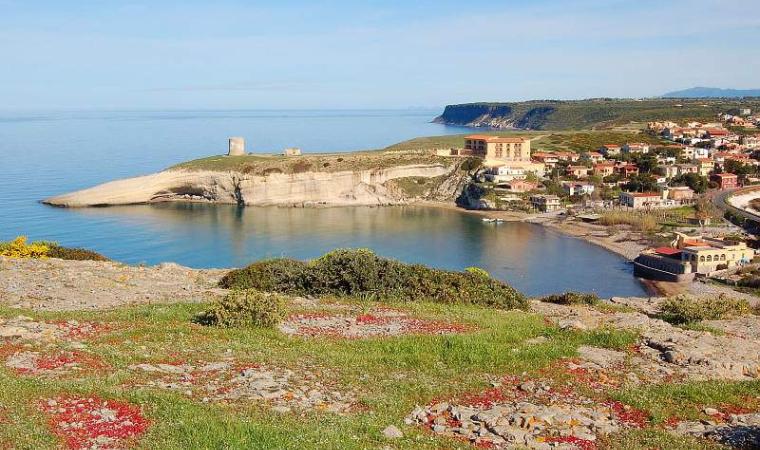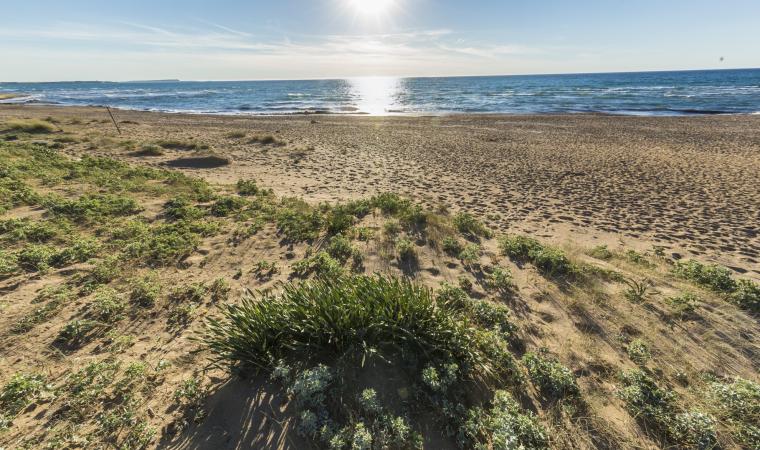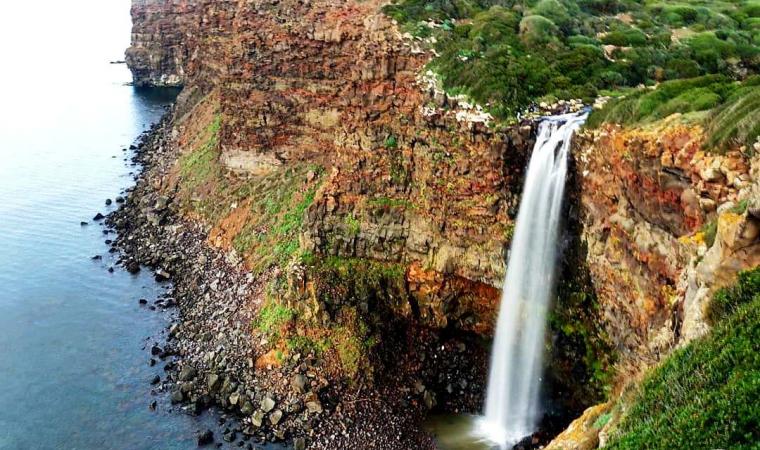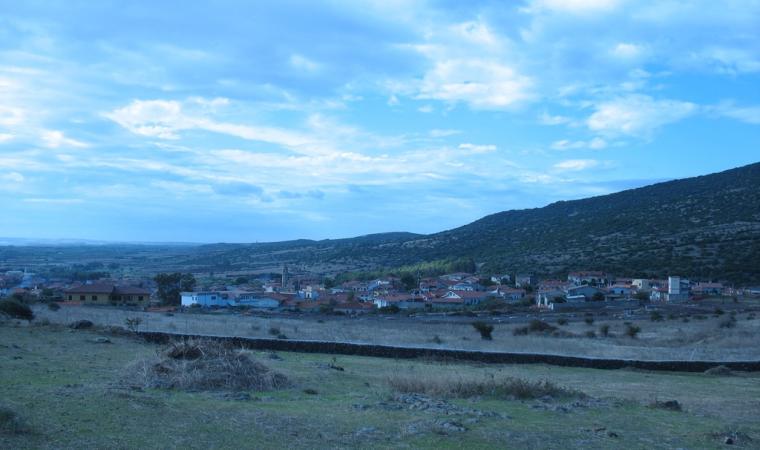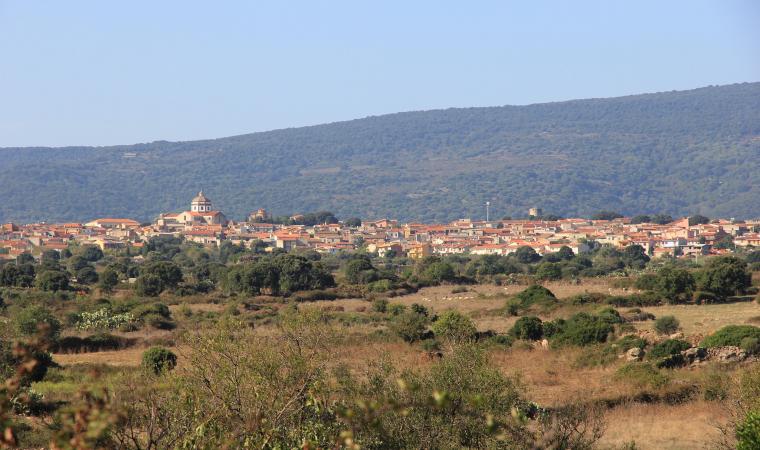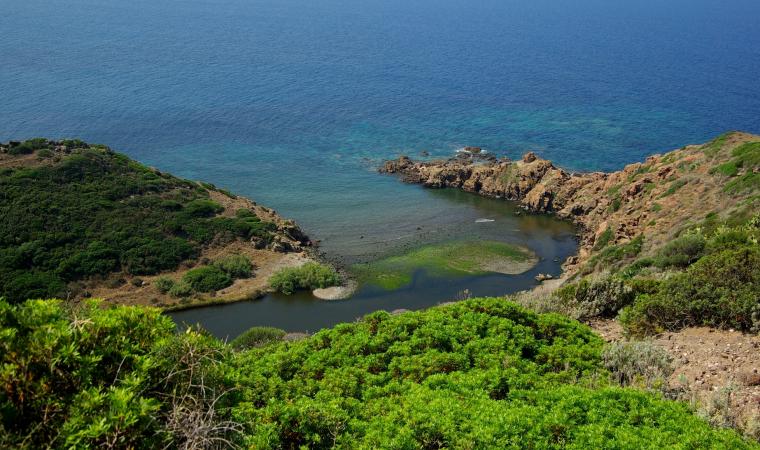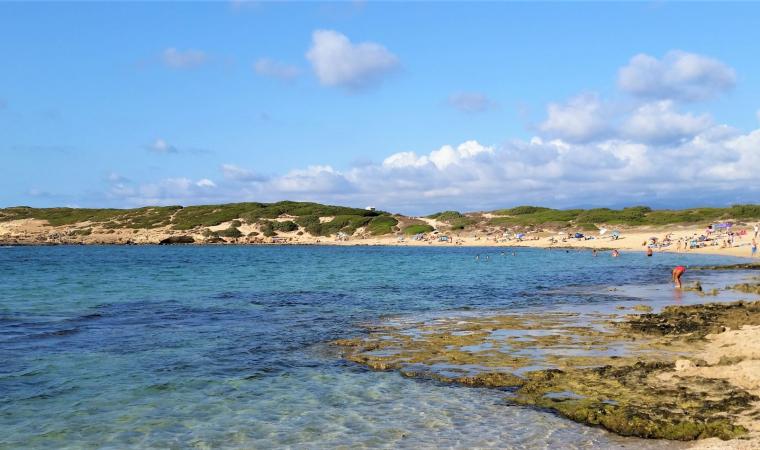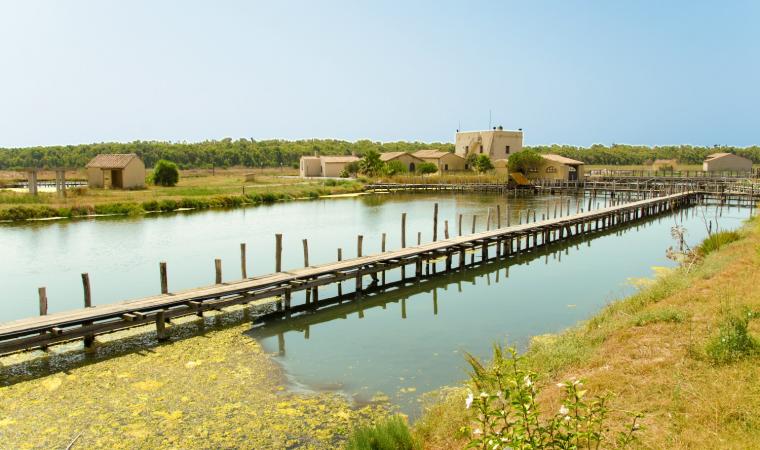From a symbol of the resistance of the Punic and Sardinian allies against the Roman Empire to a centre of Christianity on the island. This is the sad story of the lost town of Cornus, ancestor of the little town of Cuglieri. What remains of it is set in an extraordinary landscape at the foot of the Montiferru massif, between the seaside villages of Torre del Pozzo and s’Archittu, as it keeps an eye on the lunar rocks of Santa Caterina di Pittinuri. A visit at sunset makes it even more beautiful, with the sun setting on the sea in front of the hill of Columbaris, where the Early Christian ruins stand, bearing witness to the last stage of its existence.
The Carthaginians founded it at the end of the 6th century BC in this very strategic position for trade in Antiquity. It soon became rich and prosperous. The acropolis of the Punic city was built on the hill of Corchinas on a pre-existing Nuragic settlement around which the residential and artisan districts developed. All that remains from the Punic period are the walls and tombs, where the echoes of epic battles to maintain independence still ring out, like those fought at Cornus by the commander Hampsicora, leader of the revolts against the Romans by the coastal cities along with the Sardinian people.
Then came the period of the persecutions of Christians by the Romans. Many were forced to live their faith clandestinely and some were executed in Sardinia, such as Antiocho in Sulky, Gavino in Turris Libisonis, Simplicius in Olbia, Luxorius in Forum Traiani, Saturno in Caralis and Ephysius was beheaded in Nora in 303. In 313, there was a turning point with Constantine, who proclaimed freedom of worship, and Christianity soon became the official religion of the empire and Cornus the episcopal centre of the Island. Three basilica buildings were built next to the residential and artisan nucleus, one with an apse where the most prominent worshippers of the community were buried inside stone sarcophagi. Some can still be found in the site. In front of the first building, a small space served as a baptistery and, to the side, excavations have revealed earthen tombs with tiled roofs, known as ‘Capuchin-style’, partly visible on site, as well as burials in amphorae and the discovery of mensae for the funeral ritual of refrigerium, a sort of banquet in honour of the deceased, a custom that still survives in many areas of Sardinia, where coffee, biscuits and homemade bread are offered to commemorate the dead.

